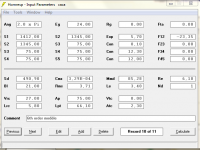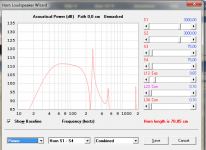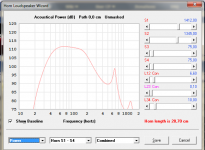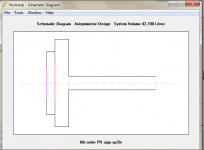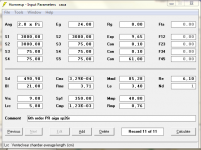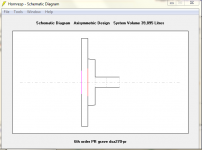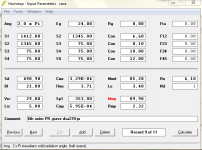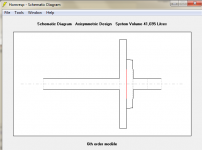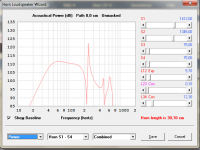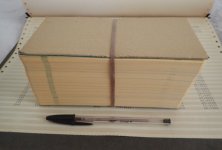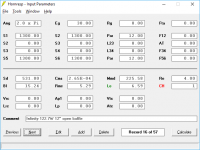Sorry for the typo - PDF Printer, nocht ODF 🙂Thanks! No ODF printer installed. I have MS Office, just not installed yet. I found out that the Foxit version I have will make pdfs once it's installed, which I assume has this ODF printer.
GM
If you don´t want to install MS-Office, use libreoffice (PDF Export build in).
If you don´t want to "install" anything on your pc (or you can´t, because you don't have permission): Download "portable apps".. It´s a bundle of freely usable Software which can be simply downloaded via a menu - nothing is "installed" in a traditional manner, no files writen into windows-directorys, etc... The programs simply sit in a folder within the portable-Apps folder. This way you could even put them on a USB Stick/drive and take them with you. Stuff like Libreoffice, PDF Viewers, Firefox, Thunerbird, etc.. are all includede. Very easys to use and download. All free.
A PDF "printer driver" to "print a PDF (=save a PDF File instead of physically getting a sheet of paper out of the printer) which is free and open Source:
PDFCreator download | SourceForge.net
There are many more "PDF Printers" out there, but many of them cost money, do advertising, install some malware, etc... So I use the one from sourceforge..
@Brian
Wine under Android? What are you up to?
Why not use a simple Content Managing System and a "responsive Design Template"? This way you dpn´t have to fiddle around with the optics and technical background too much... We did projects with joomla, wordpress (which actually is a blog, but can be used for your needs), Drupal or Typo3 (which probably is too big)..
Yup. The issue is that, when switching from BP4 to BP6P, the chamber that vents to the outside is switched, making it difficult to compare what would happen if a BP4 alignment is converted to a BP6S alignment by adding a vent on the baffle holding the driver (like what KEF did with the last version of their Coupled-Cavity Reference series, if I remember correctly). You have to swap the settings for the volumes around in the sim. This doesn't happen when you switch from BP4 to BP6P, and the "sanity check" works if you do that switch and leave the size of the second vent very small - the predicted frequency response remains very close. See images below:
Image #1: BP4 sim
Image #2: BP4 schematic
Image #3: BP4 response
Image #4: sim converted to from BP4 to BP6P, with very small port for second chamber, no volume changes
Image #5: BP6P schematic (volume initially vented to outside remains the same)
Image #6: BP6P response (basically identical to BP4 response, as expected)
Image #7: sim converted to BP4 BP6S, with very small port for second chamber, no volume changes
Image #8: BP6S schematic (volume that was initially vented to the outside is now closed).
Image #9: BP6S response (significant difference, because now the initial volume that was vented to the outside has been switched when going from BP4 to BP6S. This makes it difficult to switch back and forth between the two for comparison purposes)
Note: addressing this inconsistency could open up the possibility of being able to switch from 4BP to 6BP (P or S) ***inside the wizard itself*** - just by setting the required vent CSA to zero, e.g.
Ap1>0, Ap2=0, Ap12=0 = BP4
Ap1>0, Ap2>0, Ap12=0 = BP6P
Ap1>0, Ap2=0, Ap12>0 = BP6S
Hi Brian,
Thanks for the additional information. I will think some more about the points you raise. Any changes would require a significant amount of work, and the input wizard would also have to be modified. Existing BP6S records would need to be updated either manually by the user, or ideally, automatically by Hornresp.
Kind regards,
David
Read help ^^How can you model a PR when there are no "box types" in the software?
First image is my 6th order parrallel bandpass model parameters, using vents, as show in image 2, giving as response the last image (the 8th).
3rd/4th images are the same box, replacing magically the big port with a dayton DSA-270PR, show in pink. Response is the 7th image, wich show less resonnance (of course, there is no more the big port, as expected). But there is still a resonnance at 700hz.
5th/6th images show this time only small port replaced with a lighter PR the SEAS sp26r (not cheap...). Result is the 8th image. No more resonnnance at 700hz, but the big port resonnance come back of course.
So, we can think that with PR on each side, tada ! No resonnances !
The harder part is to find the good passive radiator with all the needed spec, with not too low qms/not too high Rms (suspension loose).
And of course, hornresp allow to add weight to PR, and allow to use multiple PR too. Use help file ! 🙂
Attachments
Last edited:
David, can you recall us when did you started working on the roots of hornresp ? ^^
Hi papasteack,
The very first version was written in late 1969 / early 1970 in the Fortran IV programming language.
Attachment 1 shows the original Hornresp "software" (deck of Hollerith 80-column punch cards).
Attachment 2 shows an original Hornresp power response chart.
(Photos were taken early this year).
Kind regards,
David
Attachments
Hi papasteack,
The very first version was written in late 1969 / early 1970 in the Fortran IV programming language.
Attachment 1 shows the original Hornresp "software" (deck of Hollerith 80-column punch cards).
Attachment 2 shows an original Hornresp power response chart.
(Photos were taken early this year).
Kind regards,
David
Thanks you so much giving a bit of your history.
You finally gived me a nice little christmas present.

I can say Hornresp is one of my favorite hobby.
I'm using screen captures from Hornresp in my site redesign work, and the resulting differently-sized images are driving my OCD crazy, LOL.
Ahh, now I understand. The form size however, is still not going to change 🙂.
Sorry for the typo - PDF Printer, nocht ODF 🙂
Windows 10 has a built-in "Print to PDF" feature. No need to install anything. Just select the "Print to PDF" option when printing something and it will create a PDF for you.
@Brian
Wine under Android? What are you up to?
Looking at my options for a running Hornresp on a small portable device.
Why not use a simple Content Managing System and a "responsive Design Template"? This way you dpn´t have to fiddle around with the optics and technical background too much... We did projects with joomla, wordpress (which actually is a blog, but can be used for your needs), Drupal or Typo3 (which probably is too big)..
What, and give up all the fun I'm having converting each existing page by hand to use CSS for formatting? 🙂
See my posts above 🙂Windows 10 has a built-in "Print to PDF" feature. No need to install anything. Just select the "Print to PDF" option when printing something and it will create a PDF for you.
Nice 🙂 Should do with enough horespower on the android-deivce. Try reactos instead of windows (or windows XP embedded), they have a much smaller footprint.. I did this years ago with Windows 98, running under BOCHs on my Samsung Galaxy Young 🙂Looking at my options for a running Hornresp on a small portable device.
But I assume you are trying wine "directly"
A man's gotta do what a man's gotta do 🙂What, and give up all the fun I'm having converting each existing page by hand to use CSS for formatting? 🙂
Hi Brian,
Thanks for the additional information. I will think some more about the points you raise. Any changes would require a significant amount of work, and the input wizard would also have to be modified. Existing BP6S records would need to be updated either manually by the user, or ideally, automatically by Hornresp.
An idea: If the selection of the BP type is made automatically via the process I suggested, the different types of bandpass can be replaced with just one option, "BP". Note that even the "BP8" option can be replaced this way, as the value of Vc3 in the wizard can be used to determine whether or not it's an 8th order bandpass.
With the new "BP" option, it should make it a bit easier to automatically convert the old BP4, BP6S , BP6P and BP8 options when Hornresp comes across them. It will be converting all records to BP, rather than converting an old BP6S record to a new BP6S record.
With a bit of minor tweaking, the image that's used for a BP8 model in the Wizard can be converted to use it for BP4, BP6 and BP6S use.
Anyway, that's my major change suggestions for the week. I'll leave the discussion about how the driver's offset in the enclosure impacts the response and should be included in the model until next week 🙂
Read help ^^
First image is my 6th order parrallel bandpass model parameters, using vents, as show in image 2, giving as response the last image (the 8th).
3rd/4th images are the same box, replacing magically the big port with a dayton DSA-270PR, show in pink. Response is the 7th image, wich show less resonnance (of course, there is no more the big port, as expected). But there is still a resonnance at 700hz.
5th/6th images show this time only small port replaced with a lighter PR the SEAS sp26r (not cheap...). Result is the 8th image. No more resonnnance at 700hz, but the big port resonnance come back of course.
So, we can think that with PR on each side, tada ! No resonnances !
The harder part is to find the good passive radiator with all the needed spec, with not too low qms/not too high Rms (suspension loose).
And of course, hornresp allow to add weight to PR, and allow to use multiple PR too. Use help file ! 🙂
I struggle to understand the help as it is not written in a "way / language / method" I can grasp easily. I have recently discovered I may have a learning difficulty, and typically learn far more visually from pictures anyway.
I can't make any sense of the box diagram pictures, I never really have been able to make much sense of them. The graphs and the data make more sense. I fundamentally understand what you are trying to get across even though looking at the graphs I don't fully see it.
Thanks for that txt file. Getting the driver loaded and some simple instructions I started making the changes to the box sizes and the PR weights. I also re-entered some of the parameters to the ones you supplied because they weren't perfectly right.
You were right about the box size even though TC Sounds say it should be around 240 liters, it seems much happier around 175 liters and 1650g.
I don't know how much volume to add for the PRs and the driver, but I am guessing the software doesn't factor these volumes in and I have to add them to the calculated box size?
Thank you very much for your help, I may not be able to still create one from scratch but at least I can modify this one.
Just for others, Silent Screamer refers here to PM talk we had, and a export simulation of hornresp to help him start with his project. Should have been in PMThanks for that txt file. Getting the driver loaded and some simple instructions I started making the changes to the box sizes and the PR weights. I also re-entered some of the parameters to the ones you supplied because they weren't perfectly right.
You were right about the box size even though TC Sounds say it should be around 240 liters, it seems much happier around 175 liters and 1650g.
I don't know how much volume to add for the PRs and the driver, but I am guessing the software doesn't factor these volumes in and I have to add them to the calculated box size?
Thank you very much for your help, I may not be able to still create one from scratch but at least I can modify this one.
 .
.
Last edited:
Just for others, Silent Screamer refers here to PM talk we had, and a export simulation of hornresp to help him start with his project. Should have been in PM.
Sorry got excited that someone actually offered help instead of just saying read the help file. I don't always just grump, I do actually appreciate genuine help.
Sorry got excited that someone actually offered help instead of just saying read the help file. I don't always just grump, I do actually appreciate genuine help.
This is one of the most helpful community I know, people treat each other with a lot of respect and kindness... So you might want to ask yourself if the responses you get have something to do with the way you asked.
You are correct. hornresp (and others) always calculate without things like braces, driver volume, port volume, etc.... These have to be added manualy.I don't know how much volume to add for the PRs and the driver, but I am guessing the software doesn't factor these volumes in and I have to add them to the calculated box size?
Sometimtes its important to know the final size of a box - keep in mind that every volume hornresp gives you is the inside of the cabinet.
This seems rather obvious, but I´ve seen a lot of cases where the net-volume given by the software is directly translated to a "box size" in the construction process... In some cases, the difference is so small it doesn't matter, in others it makes a design unusable..
So to avoid unpleasant surprises in your design process, take the additional volumes into account as soon as possible.
I always do a sketch on a sheet of paper with all the walls, bracings, speakers, etc... And then I think of the volumes (given by hornresp) which will have to fit in the box. Sometimes I calculate the volumes roughly and write them in the sketch to get a feeling for the volume addition.
Driver volume can sometimes be looked up in the spec files of the driver and hornresp has a "driver volume" feature.
This is one of the most helpful community I know, people treat each other with a lot of respect and kindness... So you might want to ask yourself if the responses you get have something to do with the way you asked.
"Your program is useless, show me how to use the stupid thing" is seldom the best way to start 🙂
If the selection of the BP type is made automatically via the process I suggested, the different types of bandpass can be replaced with just one option, "BP".
Hi Brian,
Too much work - it's not going to happen!
What could perhaps be done is to:
1. Swap the chambers and ports over in the BP6 models.
2. Automatically switch to the BP4 model when Ap2 is set to 0.10 or less in the BP6 models.
Would this be an acceptable compromise?
Kind regards,
David
Hi David, trying to use the Filter Wizard with the attached Hornresp input generates a Runtime Overflow 6 Error....
Hi Brian,
Your attached example works fine for me.
Try pressing the F8 function key in edit mode to reset the filter parameters values to their default values. If this doesn't fix things, please post the exported record file so that I can include the semi-inductance model parameter values and acoustic path length you are using, just in case they are causing the problem.
Kind regards,
David
When someone need help, he need to give other clues to understand what he is trying to do. It's fustrating for us don't understanding too what you expect from us. That is why i asked you in PM what you expected to do. And so it allowed me to give you a first simulation with hornresp. You have better done giving those clue in your thread instead of in hornresp thread. There's a lot of tutorial on the web. But i understand that we all have our way to appropriate ourself new stuff, our way to learn.Sorry got excited that someone actually offered help instead of just saying read the help file. I don't always just grump, I do actually appreciate genuine help.
You have to know you, that you're not the type of people learning by reading manual, but by doing yourself. So you needed just a example of what you can do to tweak yourself. I gived a first complex example (was enthousiast of my result ^^). I don't know you. It was too complex to start for you. So i decided to give you a more concret example simming what you want.
This is one of the most helpful community I know, people treat each other with a lot of respect and kindness... So you might want to ask yourself if the responses you get have something to do with the way you asked.
You are correct. hornresp (and others) always calculate without things like braces, driver volume, port volume, etc.... These have to be added manualy.
Sometimtes its important to know the final size of a box - keep in mind that every volume hornresp gives you is the inside of the cabinet.
This seems rather obvious, but I´ve seen a lot of cases where the net-volume given by the software is directly translated to a "box size" in the construction process... In some cases, the difference is so small it doesn't matter, in others it makes a design unusable..
So to avoid unpleasant surprises in your design process, take the additional volumes into account as soon as possible.
I always do a sketch on a sheet of paper with all the walls, bracings, speakers, etc... And then I think of the volumes (given by hornresp) which will have to fit in the box. Sometimes I calculate the volumes roughly and write them in the sketch to get a feeling for the volume addition.
Driver volume can sometimes be looked up in the spec files of the driver and hornresp has a "driver volume" feature.
I have no issues with the community in general, I have received a great deal of help across a wide range of problems over the years, and given it. My issues have been centered around this program in particular. Where I have received responses like take it or leave it, we won't help you unless you help yourself. This is all the help you are getting, the help is not going to be rewritten plenty of others can understand it, so go fly a kite (paraphrasing).
I am very grateful for people that actually try to help and detest those that only comments are try harder or read the help, when they know how to use the program, but would rather make useless and pointless comments.
But I digress... The reason I ask about the driver volume is because it really isn't all that obvious, there are several parameter that could be used to calculate a rough driver or PR volume.
If I was to write a program like this I would probably include options to include and exclude these volumes as a clear selectable option, like I have seen in other programs. From what I can see of the program it seems to have a fair bit of functionality. I don't think it unreasonable for it to included, hence my simple question. Thank you for clarifying that point.
- Home
- Loudspeakers
- Subwoofers
- Hornresp
